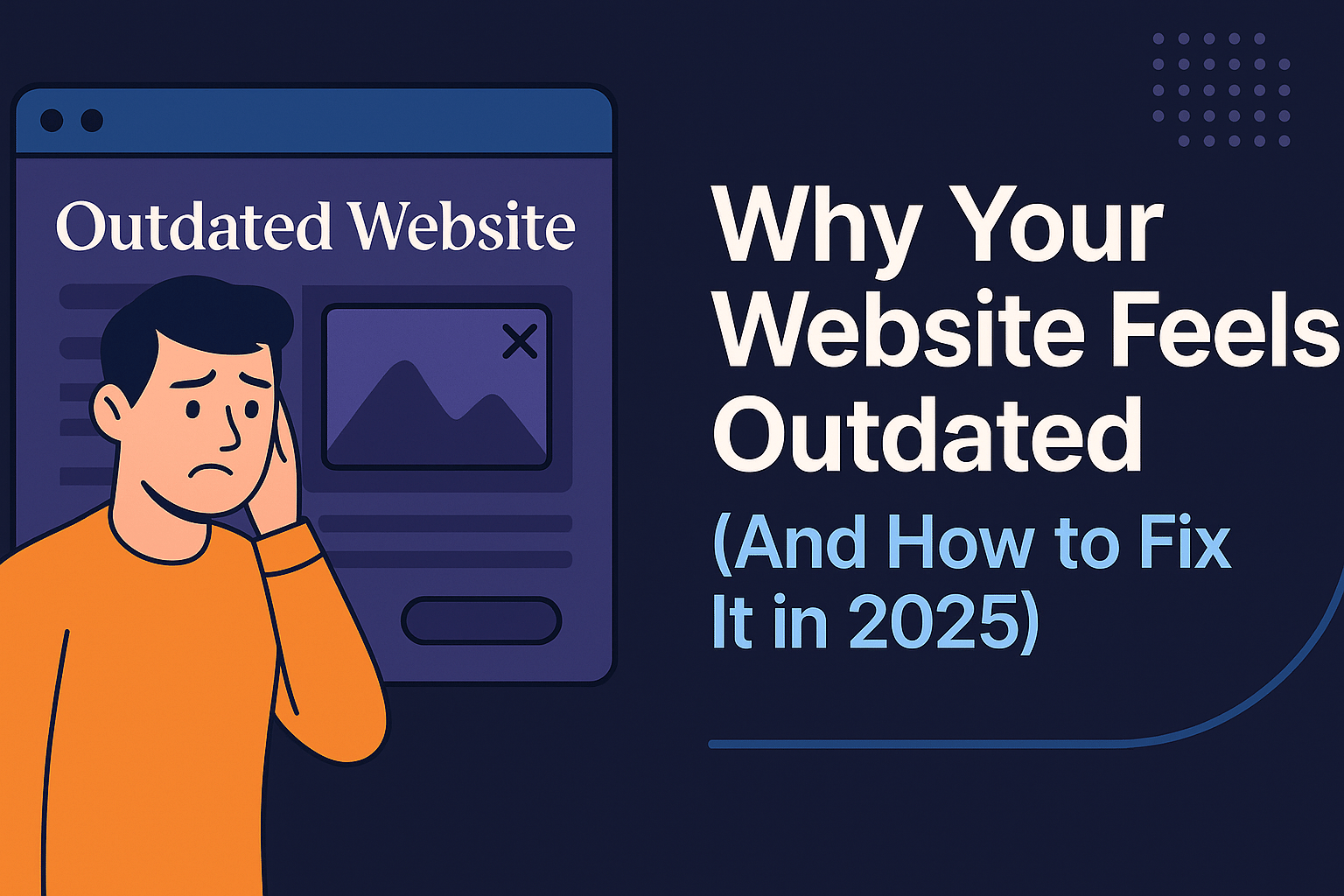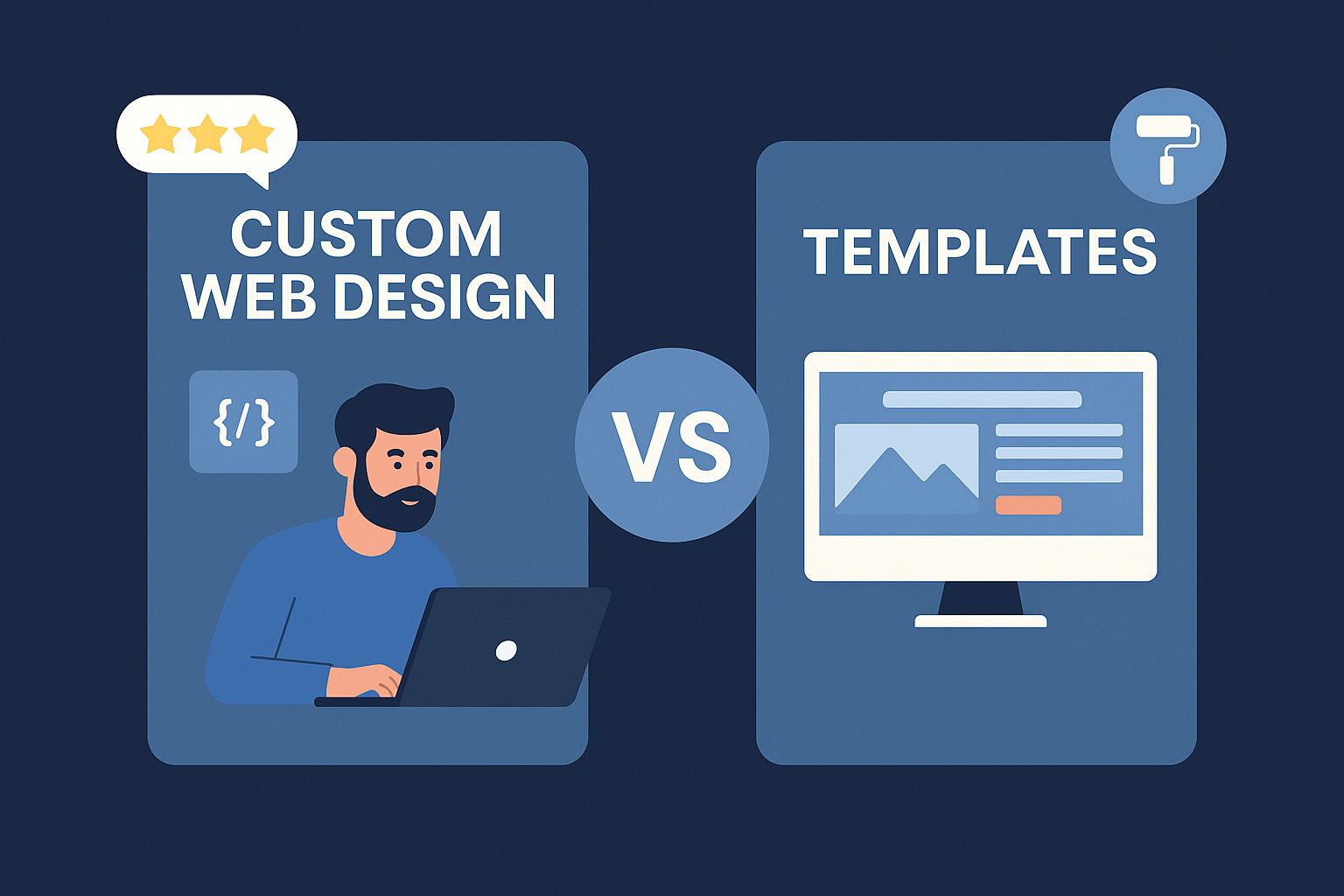Your school's website isn't just a digital brochure - it's a living, breathing communication hub. It shapes first impressions, answers questions before they're asked, and plays a key role in parent engagement and Ofsted compliance.
In 2025, expectations for school websites are higher than ever. Whether it's a parent trying to check term dates on their phone or a new family comparing schools online, your website needs to deliver clarity, speed, and confidence.
In this post, we'll unpack what makes a responsive school website great, show off real-world examples, and break down how Futurelab builds websites that make schools proud - and parents reassured.
What Makes a Great School Website in 2025?
Let's set the bar high. A good school website today must check more than just the design box - it has to perform technically, function smoothly across devices, and make admin life easier behind the scenes.
Here's what we prioritise in every school build:
1. Mobile-First Design
More than 75% of users browse school websites on their phone. Yet many school sites still treat mobile as an afterthought - with cluttered layouts, tiny buttons, or broken navigation. A responsive site adapts perfectly across phones, tablets, and desktops. For parents on the go, this matters.
2. Accessibility & Inclusion
UK schools serve a diverse community. That includes parents and pupils with visual impairments, language challenges, or neurodiversity. A strong website supports everyone - with features like high contrast text, alt tags, readable font sizes, and screen reader compatibility.
3. Ofsted-Friendly Structure
Ofsted doesn't grade your site's design - but they do require specific information to be easily accessible. This includes policies, performance data, SEN info, and safeguarding documentation. A smart layout ensures these aren't buried behind confusing menus.
4. Fast Load Times
Every second counts. A slow site frustrates users and pushes them away - especially on mobile networks. We aim for load times under 2 seconds, even on content-heavy pages. Google likes this, and so do parents.
5. Easy Content Management
School staff shouldn't have to call a developer every time they need to update a lunch menu or upload a PDF. We build CMS-driven sites that are intuitive and fully editable by non-technical users.
What Parents Expect from a School Website
Before we get to visual examples, it's worth pausing to ask: what are parents actually looking for when they land on your school site?
From our experience, here's what they expect:
- A clear sense of your school's values and culture - do you feel friendly, inclusive, academic, creative?
- Quick access to essentials: term dates, school hours, contact info, uniforms, clubs, curriculum.
- A fast-loading experience with no confusing navigation.
- Updated information - not a newsletter from two years ago still on the homepage.
A great school website builds trust. Parents want to feel that your school is organised, communicative, and modern - not playing catch-up online.
Real-World Examples of Excellent School Website Design
Let's look at five standout websites we've either built or studied closely, highlighting what they do right.
1. Meadowbrook Primary - Greater Manchester
This project focused on warmth and clarity. We used large, friendly fonts, custom photography of real pupils (with parental consent), and a clean navigation structure with three clear user paths: "Parents," "Pupils," and "Staff."
Notably, the homepage adapts beautifully on mobile. The weekly newsletter, calendar highlights, and lunch menus are all accessible without scrolling endlessly.
Why it works: Emotional tone + mobile-first UX + quick access to key info.
2. Horizon Academy Trust - Yorkshire
This multi-school trust needed a scalable, brand-consistent site system. We designed a modular framework where each school could maintain its own personality while keeping structure consistent - helping both users and administrators.
Each sub-site loads quickly, shares a universal CMS, and includes a dashboard where staff can update their own content, documents, and alerts.
Why it works: Scalability + brand cohesion + decentralised control.
3. St. Catherine's RC School - Midlands
This school came to us with a painfully slow WordPress site built in 2012. Load times were over 8 seconds. We rebuilt from scratch using lightweight code and image optimisation - and dropped their page load to 1.1 seconds across all pages.
We also restructured the navigation, grouping key pages (policies, curriculum, contact) into a logical system that works for both desktop and mobile users.
Why it works: Huge performance gains + simplified user flow.
4. Northern Inclusive College - Lancashire
Accessibility was priority one for this post-16 provider. We integrated a high-contrast toggle, ARIA labels, keyboard-friendly tab navigation, and compliant downloadable resources.
All PDFs were reviewed and replaced with HTML or screen-reader-friendly versions wherever possible - a big win for users and compliance alike.
Why it works: Truly inclusive design + WCAG 2.1 compliance baked in.
5. Cedars Infant School - London
We gave this vibrant little school a site that matched its personality - soft pastel colours, playful icons, and warm tone-of-voice throughout.
But behind the scenes? A bulletproof CMS that lets the admin staff update pages with drag-and-drop simplicity. No training needed.
Why it works: Joyful visual identity + staff empowerment via intuitive backend.
What Ofsted Expects on a School Website
It's not enough for your site to look good - it must also meet regulatory expectations.
Here's a short list of content Ofsted expects to be easily accessible:
- Contact information for staff and governors
- Admissions policy and process
- Curriculum overview by key stage
- SEN (Special Educational Needs) information
- Latest Ofsted report
- Behaviour, safeguarding, and equalities policies
- Catch-up funding or Pupil Premium strategy
We often find schools have this content - but it's buried under outdated menus or broken links. Our audits always start with a compliance checklist to ensure you're inspection-ready.
Why Many School Websites Still Miss the Mark
Even in 2025, it's common to find school websites that feel stuck in the early 2010s. Some common issues:
- Mobile menus that don't open (or even exist)
- Newsletters uploaded as blurry scanned PDFs
- Massive hero images that take 10 seconds to load
- Confusing navigation with 40+ pages
- "Contact us" forms that go nowhere
These aren't minor quirks - they're barriers. They frustrate parents, weaken engagement, and create unnecessary admin work.
We've even seen Ofsted reports reference "difficulty finding key information on the website" as a concern.
Our Process: How We Build High-Impact School Sites
At Futurelab, we design and build school websites that look good - but more importantly, work beautifully.
Here's how:
1. Audit & Discovery
We analyse your current site, understand your school's values, and identify the pain points for parents and staff.
2. Wireframing & UX Design
We map out clean, intuitive site flows - with mobile in mind from the first sketch.
3. Custom Build
No templates. No bloated themes. Just clean, modern code and lightweight CMS integration that runs fast and stays flexible.
4. Content Support
Need help rewriting content or organising your policies? We assist with that too - keeping it clear, accessible, and parent-friendly.
5. Training & Handover
You get control. We train your staff to use the backend with confidence. Updating pages, uploading forms, and editing menus will be easy.
6. Ongoing Support (Optional)
From hosting to backups to future updates - we can stay on board if you want us to.
FAQs: Everything Schools Ask Us
Do school websites really need to be mobile-optimised?
Yes. Over 75% of traffic comes from mobile. Parents expect a site that's quick, clickable, and readable on the go.
How much does a school website cost?
Our primary school builds typically start at £1,800. Multi-academy trust solutions or advanced builds may range higher depending on complexity.
Can we update the site ourselves after launch?
Absolutely. Our CMS lets staff add events, swap photos, or update documents with zero coding knowledge. We offer hands-on training too.
Do your sites meet Ofsted and accessibility requirements?
Yes. We build every site with Ofsted's checklist in mind and follow WCAG 2.1 standards for accessibility.
What if we already have a website but want to improve it?
We offer full audits and can rebuild using your existing content - or migrate what's working into a cleaner, faster structure.
Ready to Bring Your School Website Up to Standard?
A modern, responsive school website isn't a luxury - it's the new baseline. It builds trust with families, supports your staff, and ensures you're ready for every visitor, whether it's a new parent or an Ofsted inspector.
If your current site is clunky, confusing, or just plain hard to manage - we'd love to help.
Book a Free Website Audit
We'll review your current setup, share quick wins, and show you what a better future could look like.
Get Started Today


